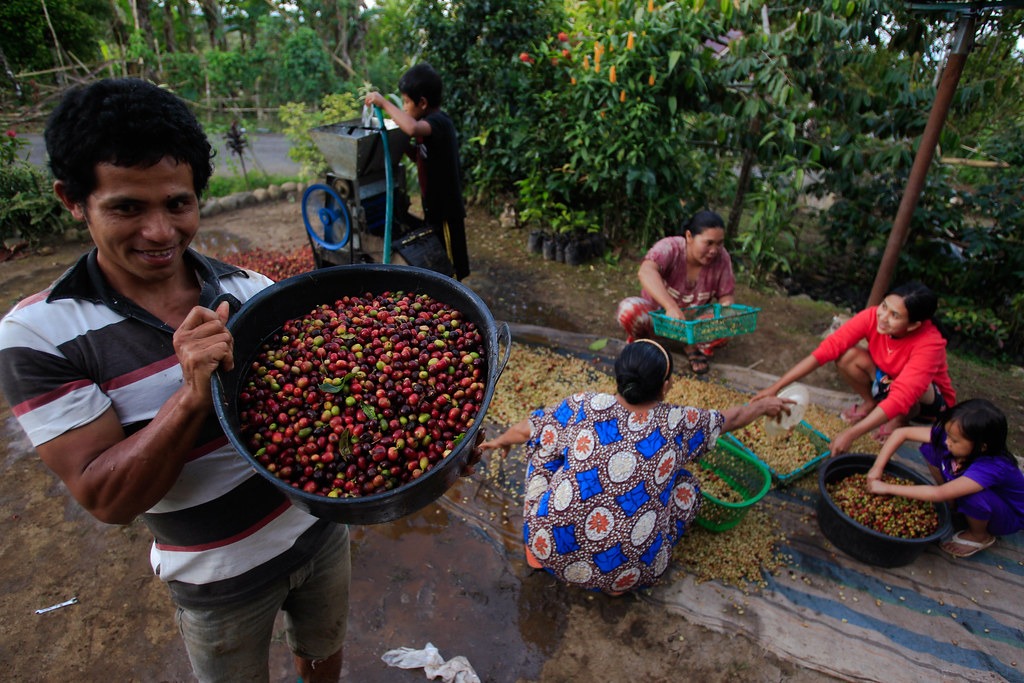Hit by pandemic, country’s coffee sector still facing challenges but showing signs of improvement, say growers
NEW DELHI (AA) – India’s coffee export industry, adversely affected by the pandemic, is struggling to recover lost ground, say exporters and growers on the eve of International Coffee Day, observed on Friday.
In August, a report by global trade finance company Drip Capital said that in the 2019-2020 financial year, the country’s overall coffee exports had reached a nine-year low in terms of US dollar value and plummeted by 44% in April 2020.
“Even before COVID-19 struck a blow to the sector, India’s coffee exports declined at a -3% CAGR (compound annual growth rate) between FY12-21,” the report said.
Coffee exporters in India now say they are on the path to recovery and are expecting higher exports in 2022 after they amounted to nearly $720 million in 2020-2021.
“We’re hopeful that despite all the challenges, it appears that slowly, as the economy is opening up, things are improving. There’ve been some incentives from the government and we’ve asked for more … hopefully 2022 will be bright for everyone,” said Nishant Gurjer, the owner of Kaapi Royale, one of India’s top high-quality coffee producers.
“In the last two-to-three months, there has been a slow pickup and upward trend in the coffee market. So, we’re hopeful that things will improve soon for those people associated with the industry,” he told Anadolu Agency.
India, the third-largest producer and exporter of coffee in Asia, sells abroad over 70% of its output, grown on about 454,000 hectares (over 1.1 million acres) by more than 350,000 coffee farmers. According to official figures, 98% of these are small-scale growers.
Cultivation is mostly in the country’s southern states, with Karnataka dominating its coffee industry.
“The coffee industry situation is currently going well and exports are rising. There have been problems in the industry because of the pandemic but now things are improving and we’re hopeful of further improvement in coming time,” said Salu C.K, a coffee exporter in the southern Kerala state and secretary of the Kerala Coffee Processors and Dealers Association.
Problems during pandemic
Kaapi Royale’s owner Gurjer highlighted that the coffee industry faces a number of problems that have hit the coffee industry during the pandemic.
“Several things have happened in the coffee production sector because of the lockdown. There has been a disruption of manpower that we need to process the coffee, both at the farm and at the processing level … so obviously, there has been a slowdown,” he explained.
Gurjer added that difficulties in the movement of containers was another major issue that has beset exporters.
“We’re unable to use containers,” he said, explaining that the unavailability of containers continued despite exporters’ willingness to pay skyrocketing freight rates “to fulfill our commitments.”
Jeffrey Rebello, associated with the United Planters’ Association of Southern India, echoed some of these problems faced by the coffee sector.
“Things are slowly returning to normal. But, the container rates have gone up dramatically. So, the cost of shipping has gone up,” he said.
Rebello also said that growers were hopeful of an increase in crop output this year. “The season of coffee production starts in November, December … this year’s crop is expected to be better than last year.”
The state-run Coffee Board of India has forecast that, post-blossom, output in 2021-2022 will be 369,000 tons, up from 334,000 tons in 2020-21.
Support needed
R. Sanjit, secretary of the United Planters’ Association of Southern India, told Anadolu Agency that they sought more government support.
“We, as growers, are ready to deliver. But, we’d need some hand-holding from the government to take us forward to facilitate the ambitious target on production and exports,” he said, adding that commodity boards in the country had set “very high targets for increasing our production and exports in this sector.”
Referring to a similarly high yearly export target of $400 billion espoused by Prime Minister Narendra Modi, Sanjit said fulfilling this goal would be “challenging” for the plantation sector.
“The export program will be quite challenging, given the withdrawal of the 3% MEIS (Merchandise Exports from India Scheme) benefit starting on Dec. 31, 2020,” he said.
He added that the rate of the Remission of Duties and Taxes on Export Products program, which also rewards exporters, had been recently set at 1%, applicable from Jan. 1, 2022.
This, Sanjit said, turned out to be “very disappointing for the plantation sector.”

